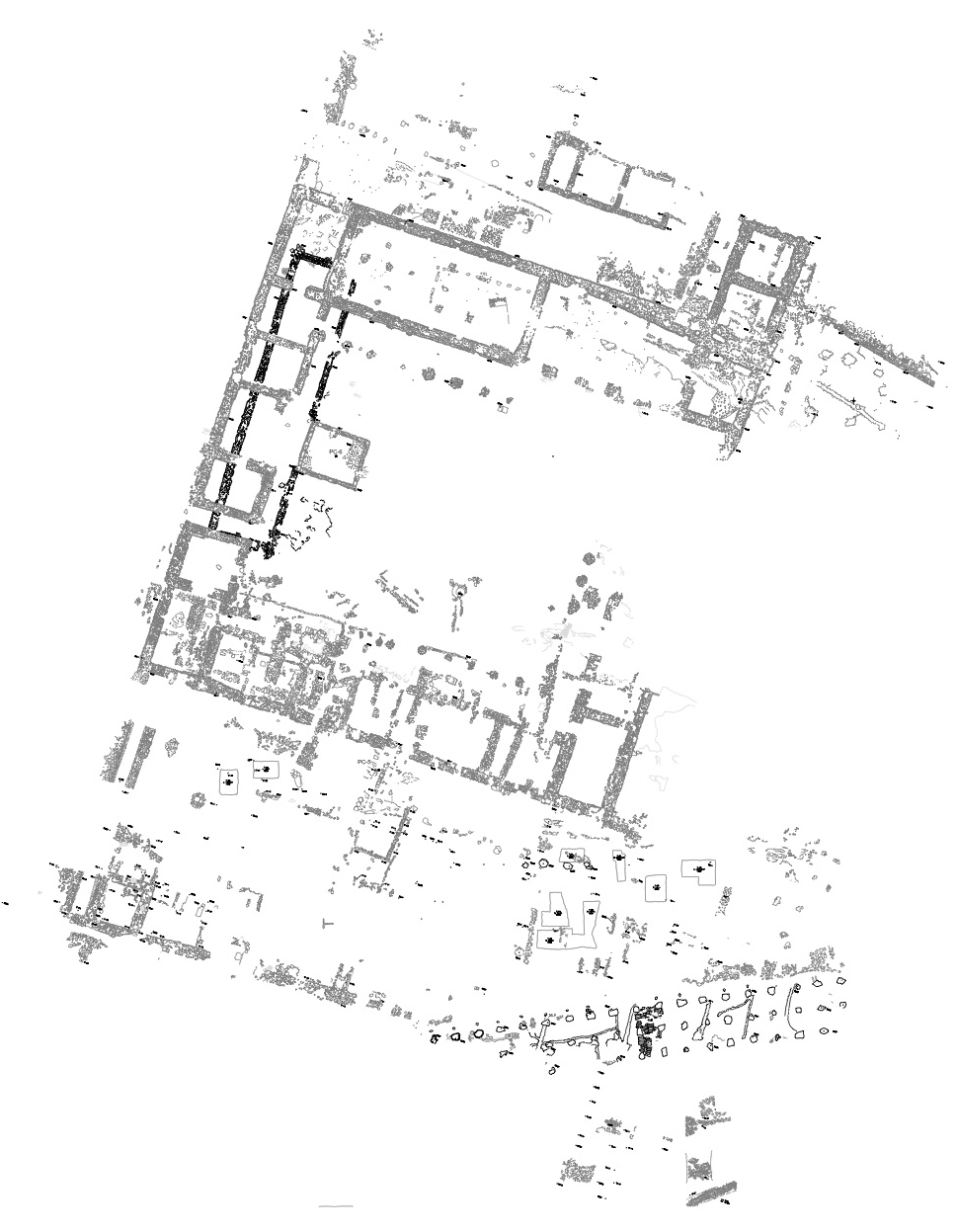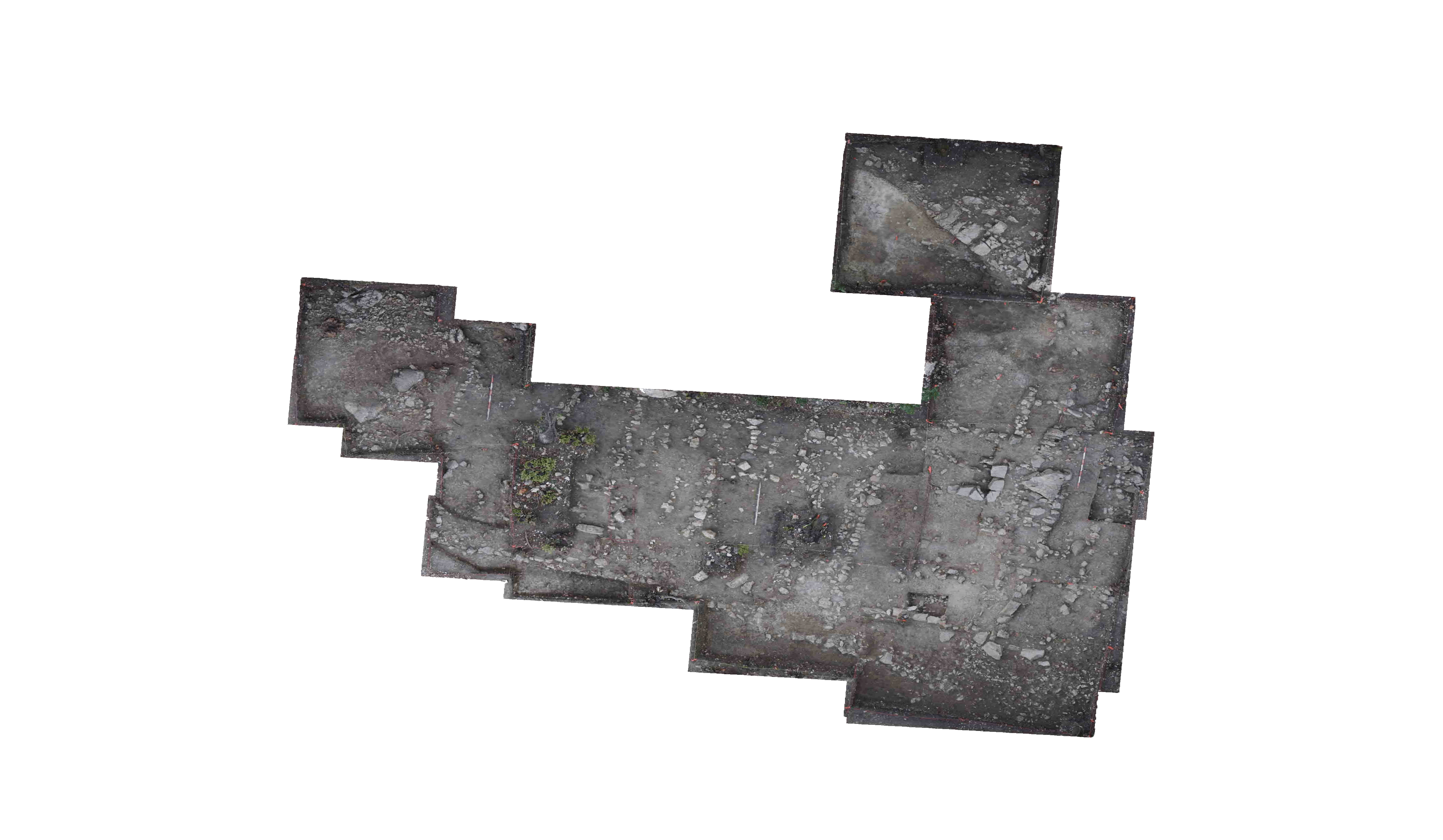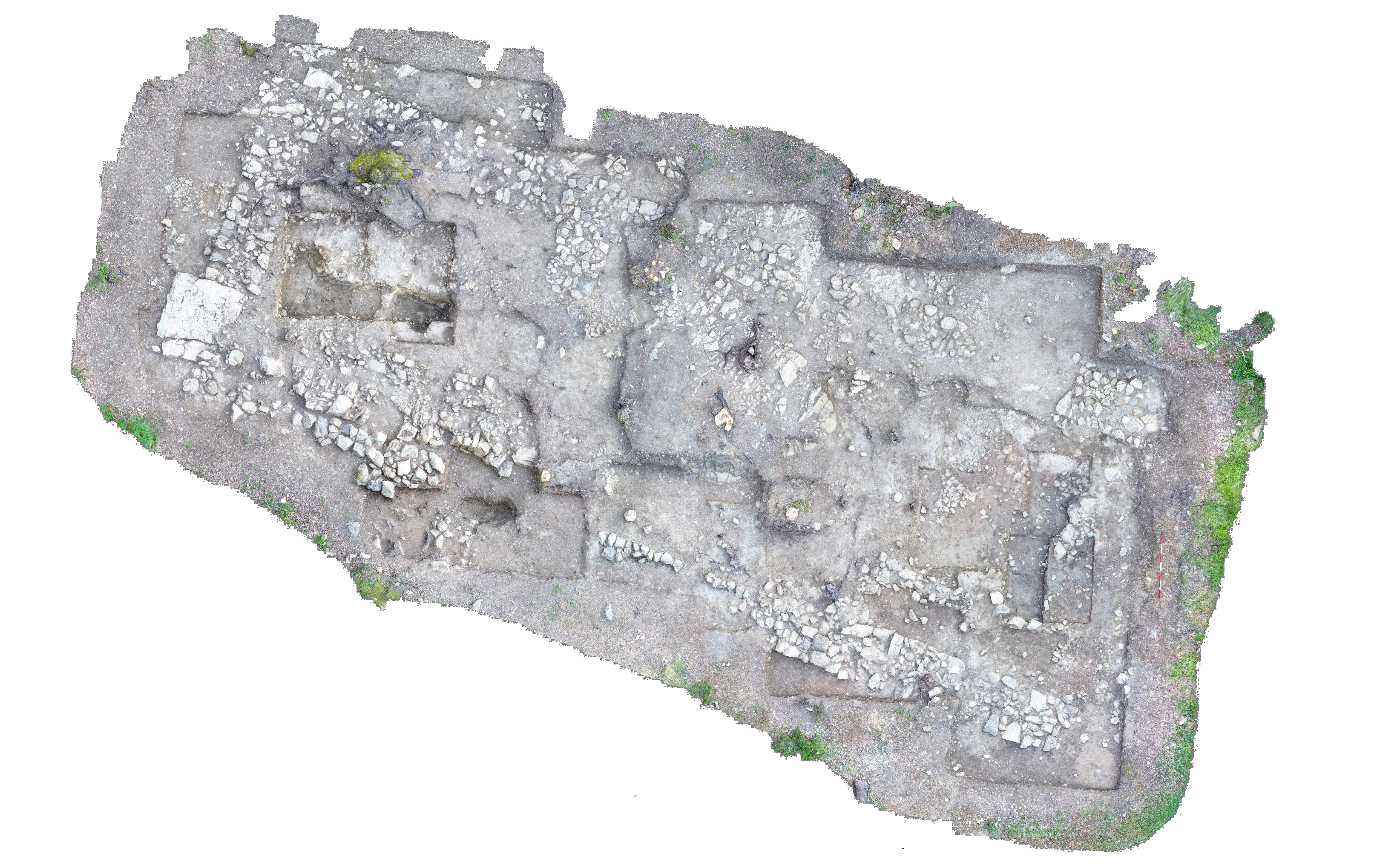Document Content
Pottery Summary
Pottery Totals:
Locus | Total | Percentage |
21 | 754 | 20 |
22 | 886 | 23 |
23 | 69 | 2 |
24 | 354 | 9 |
25 | 809 | 21 |
26 | 139 | 4 |
27 | 363 | 9 |
28 | 391 | 10 |
29 | 57 | 1 |
30 | 0 | 0 |
31 | 0 | 0 |
Grand Total | 3822 |
Locus 21:
Body | Rim | Base | Handle | Tondo | Total | Percentage | |
Coarseware | 291 | 13 | 9 | 0 | 0 | 313 | 41 |
Impasto | 336 | 29 | 5 | 4 | 1 | 375 | 50 |
Fine Impasto | 51 | 5 | 0 | 1 | 1 | 58 | 8 |
Bucchero | 6 | 0 | 1 | 1 | 0 | 8 | 1 |
Total: | 754 |
Locus 22:
Body | Rims | Bases | Handles | Tondos | Total | Percentage | |
Coarseware | 380 | 34 | 13 | 2 | 0 | 429 | 48 |
Impasto | 382 | 21 | 8 | 1 | 1 | 413 | 47 |
Fine Impasto | 34 | 3 | 2 | 0 | 0 | 39 | 4 |
Bucchero | 5 | 0 | 0 | 0 | 0 | 5 | 1 |
Total | 886 |
Locus 23:
Body | Rims | Bases | Handles | Tondos | Total | Percentage | |
Coarseware | 36 | 3 | 1 | 0 | 0 | 40 | 58 |
Impasto | 19 | 4 | 0 | 0 | 0 | 23 | 33 |
Fine Impasto | 5 | 1 | 0 | 0 | 0 | 6 | 9 |
Bucchero | 0 | 0 | 0 | 0 | 0 | 0 | 0 |
Total | 69 |
Locus 24:
Body | Rims | Bases | Handles | Tondos | Total | Percentage | |
Coarseware | 222 | 9 | 1 | 0 | 0 | 232 | 66 |
Impasto | 95 | 5 | 0 | 1 | 0 | 101 | 29 |
Fine Impasto | 20 | 0 | 0 | 0 | 0 | 20 | 5 |
Bucchero | 0 | 0 | 1 | 0 | 0 | 1 | 0 |
Total | 354 | ||||||
|
|
|
|
|
|
|
|
Locus 25:
Body | Rims | Bases | Handles | Tondos | Total | Percentage | |
Coarseware | 265 | 11 | 6 | 4 | 0 | 286 | 35 |
Impasto | 397 | 27 | 2 | 0 | 0 | 426 | 53 |
Fine Impasto | 87 | 4 | 0 | 1 | 0 | 92 | 11 |
Bucchero | 4 | 0 | 0 | 1 | 0 | 5 | 1 |
Total | 809 |
Locus 26:
Body | Rims | Bases | Handles | Tondos | Total | Percentage | |
Coarseware | 98 | 1 | 1 | 0 | 0 | 100 | 72 |
Impasto | 35 | 1 | 1 | 0 | 0 | 37 | 27 |
Fine Impasto | 1 | 0 | 0 | 0 | 1 | 2 | 1 |
Bucchero | 0 | 0 | 0 | 0 | 0 | 0 | 0 |
Total | 139 |
Locus 27:
Body | Rims | Bases | Handles | Tondos | Total | Percentage | |
Coarseware | 212 | 9 | 2 | 1 | 0 | 224 | 62 |
Impasto | 102 | 8 | 2 | 0 | 0 | 112 | 31 |
Fine Impasto | 21 | 2 | 2 | 0 | 0 | 25 | 7 |
Bucchero | 2 | 0 | 0 | 0 | 0 | 2 | 0 |
Total | 363 |
Locus 28:
Body | Rims | Bases | Handles | Tondos | Total | Percentage | |
Coarseware | 195 | 14 | 6 | 1 | 0 | 216 | 55 |
Impasto | 141 | 9 | 4 | 0 | 0 | 154 | 39 |
Fine Impasto | 14 | 4 | 1 | 0 | 0 | 19 | 5 |
Bucchero | 2 | 0 | 0 | 0 | 0 | 2 | 1 |
Total | 391 |
Locus 29:
Body | Rims | Bases | Handles | Tondos | Total | Percentage | |
Coarseware | 31 | 6 | 1 | 0 | 0 | 38 | 68 |
Impasto | 14 | 1 | 0 | 0 | 1 | 16 | 27 |
Fine Impasto | 3 | 0 | 0 | 0 | 0 | 3 | 5 |
Bucchero | 0 | 0 | 0 | 0 | 0 | 0 | 0 |
Total | 57 |
Loci 30 and 31:
No excavations conducted, so no pottery recovered.
In 2019, we recovered relatively high quantities of pottery, especially in comparison with the 2017 and 2018 excavations in T90; in 2019, we found 3822 sherds of pottery, while in 2017 we recovered 1445 sherds and in 2018, we found 893 sherds.
The largest concentration of pottery was found in deposits immediately overlying EPOC4’S floor and walls, and so date to the building’s final phase of occupation; in Loci 21 and 25, we recovered 41% of all pottery found in T90 in 2019. Additionally, in deposits associated with the building’s destruction, Loci 24 and 28, we found 19% of all pottery recovered in 2019. This is in contrast to other types of materials, especially those associated with metal production, which concentrated in deposits predating the construction of EPOC4. In the deposits that predate the construction of EPOC4, Loci 22, 23, 26, 27, and 29, we found 39% of all pottery found in T90 this season.
Nearly all pottery found in T90 in 2019 were examples of coarseware or impasto. Of the 3822 sherds found in T90, 3535 sherds were coarseware or impasto, amounting to 92% of all pottery found in 2019. In contrast, we found only 23 sherds of bucchero. Many examples of coarseware exhibited burning or discoloration on the interior surface, indicating that they were cooking vessels. This suggests that cooking and food production occurred in EPOC4 and reinforces our interpretation of the building as a habitation.
While most ceramics found in T90 were utilitarian, there is a notable distinction in the distribution of coarseware and impasto. In Loci 21, 24, 25, and 28, which overlie EPOC4’s floor or walls and so are associated with the final occupation or destruction of the building, we found proportionately more impasto. In deposits underlying and predating EPOC4, Loci 22, 23, 26, 27, and 29, we found higher proportions of coarseware. In deposits overlying EPOC4, on average, coarseware amounted to 49% of the ceramic assemblage, whereas in deposits underlying EPOC4, coarseware averaged 62% of recovered ceramics.
The proportional distribution of finewares is similar. While few examples of fine impasto or bucchero were found in T90, the highest concentration of finewares came from deposits overlying EPOC4’s floor or walls; 189 sherds of fine impasto, or 72% of all fine impasto, and 16 sherds of bucchero, or 70% of all bucchero, were recovered from Loci 21, 24, 25, and 28.
Overall, the typological distributions of ceramics suggest that finer ceramics were used or consumed with greater frequency during the final period of EPOC4’s occupation, whereas in periods predating EPOC4, people were utilizing coarser ceramic types and vessels. This is in keeping with other types of materials recovered from deposits beneath EPOC4, such as slag, vitrified terracotta, tile with adhered slag, and crucible fragments, which indicate that metal production and industry occurred in the environs of EPOC4 prior to the building’s construction. Further evidence of industry from deposits predating EPOC4’s construction includes a coarseware footed base with a potter’s mark inscribed on the base (PC20190064).
Deposits underlying EPOC4 are further distinguished from those overlying the building by handmade and coil-made vessels. In total, six coil-made ceramic fragments were recovered as special finds, and four of these were found in Loci 26 and 27, underlying EPOC4’s floor (PC20190110, PC20190111). While handmade vessels cannot be assigned a specific date of production with any certainty, they suggest an early date of production, as the potter’s wheel came into widespread use at the start of the 7th century. Therefore, we infer that the deposits in which these coil-made vessels were recovered, which underlie EPOC4, likely date to the end of the 8th century.
Furthermore, an early date for the construction of EPOC4 is suggested by the recovery of a Protocorinthian skyphos base (PC20190083). This base was recovered from Locus 27, one of the charcoal-rich deposits underlying EPOC4’s subflooring. This base was recovered from atop a bedrock shelf, where elements of EPOC4’s subfloor, excavated in 2018 as Locus 12, partially intermingled with the charcoal-rich deposit of Locus 27, which predates EPOC4’s construction. Therefore, this Protocorinthian skyphos base, which can be dated to approximately 700 BCE, either was deposited in EPOC4’s subfloor or in a deposit predating the construction of EPOC4. Therefore, this sherd provides a terminus post quem for EPOC4, indicating that the building was constructed at the end of the 8th or the start of the 7th century BCE.
| Descriptive Attribute | Value(s) |
|---|---|
| Document Type | Trench Book Entry |
| Start Page | 325 |
| End Page | 338 |
| Trench Book Entry Date | 2019-08-02 |
| Entry Year | 2019 |
| Entry Type | Other |
| Trench Book Title (Paper Book) | KRK XIV |
| Descriptive Attribute | Value(s) |
|---|---|
| Is Part Of Vocabulary: DCMI Metadata Terms (Dublin Core Terms) | Trench Book KRK XIV T90 2019 Vocabulary: Murlo |
Suggested Citation
Anthony Tuck. (2019) "T90 (2019-08-02):325-338; Other from Europe/Italy/Poggio Civitate/Tesoro/Tesoro 90/T90 2019". In Murlo. Anthony Tuck (Ed). Released: 2019-09-13. Open Context. <https://opencontext.org/documents/1a71388a-e9ce-4895-95cc-3ffba597963c> ARK (Archive): https://n2t.net/ark:/28722/k2gb2cz1r

Copyright License
To the extent to which copyright applies, this content
carries the above license. Follow the link to understand specific permissions
and requirements.
Required Attribution: Citation and reference of URIs (hyperlinks)







